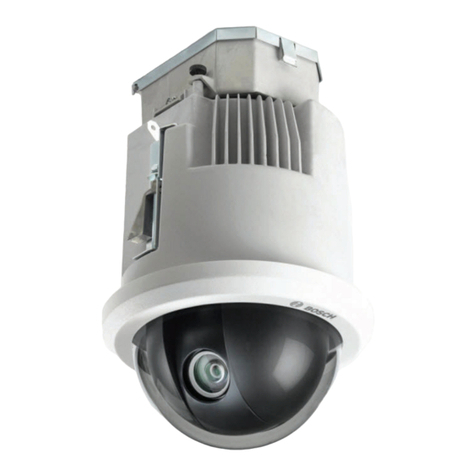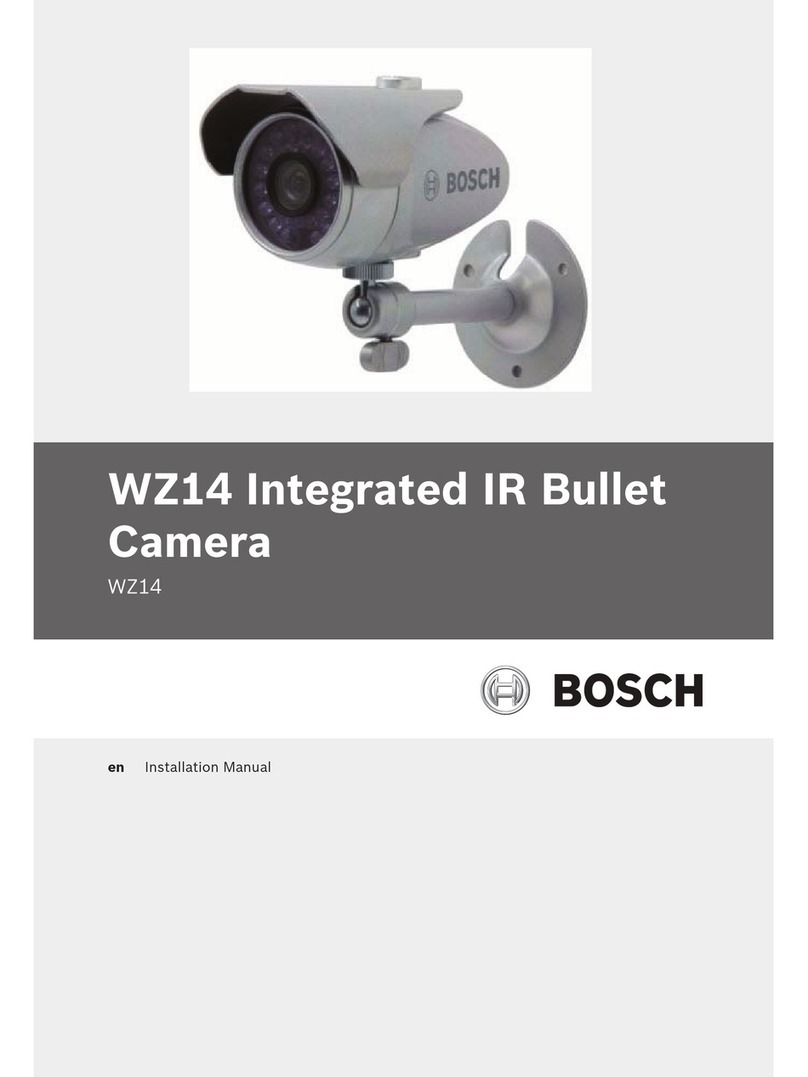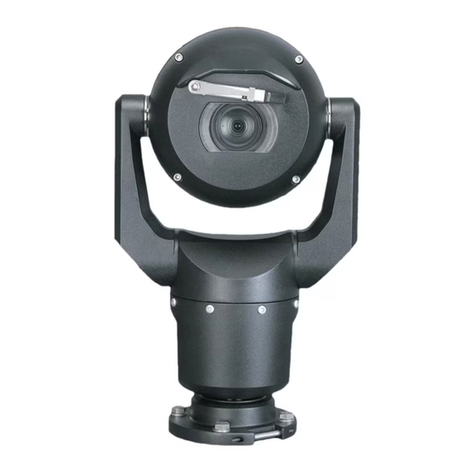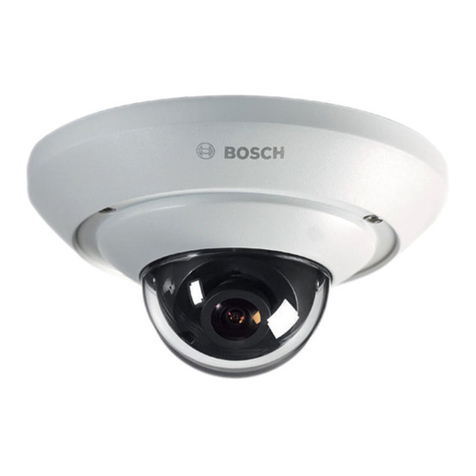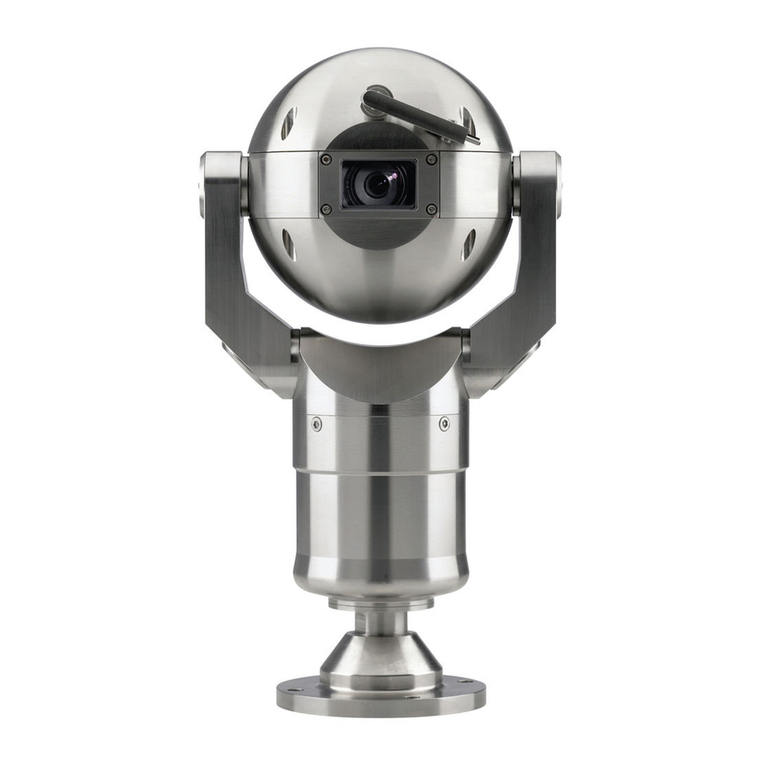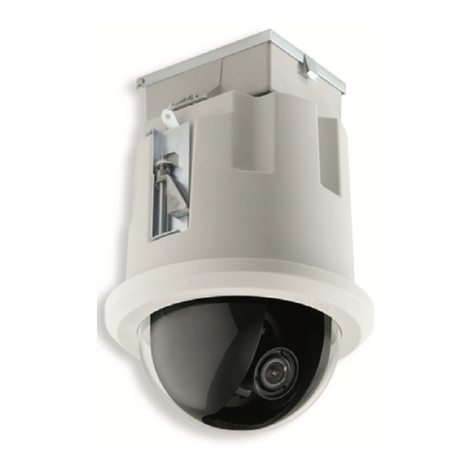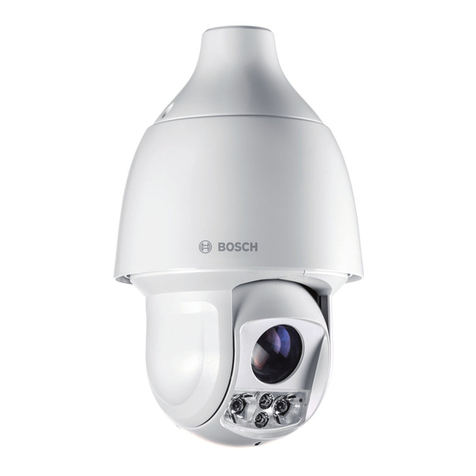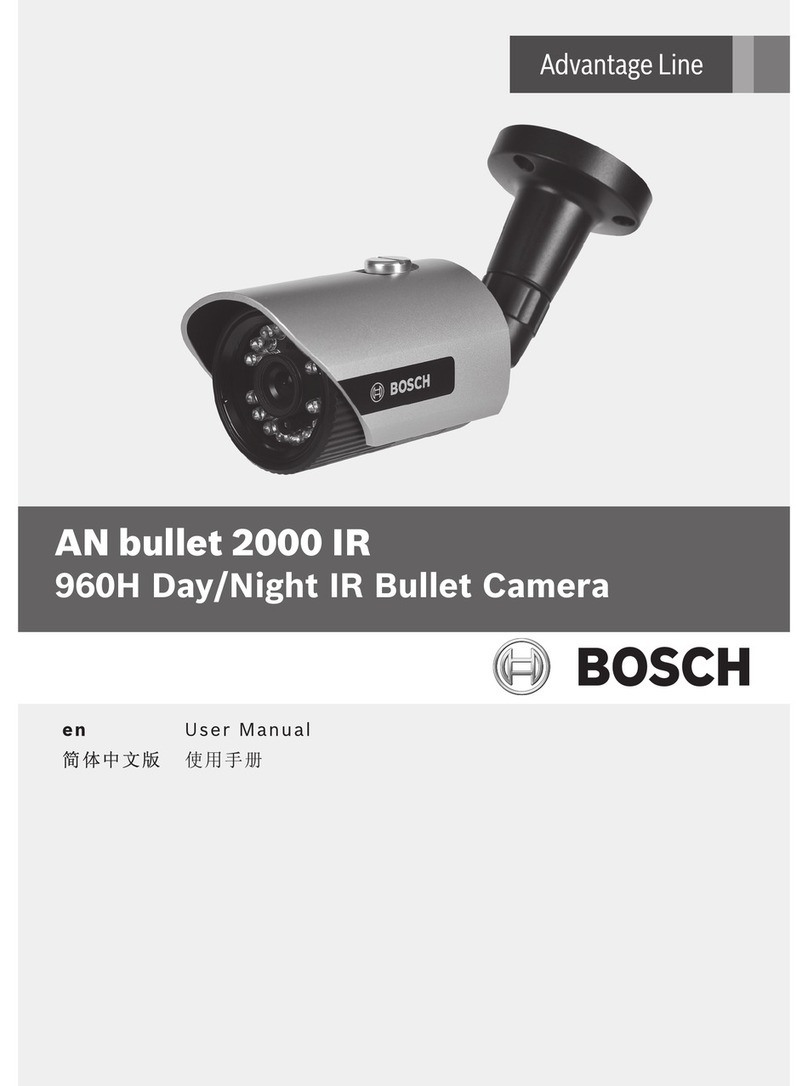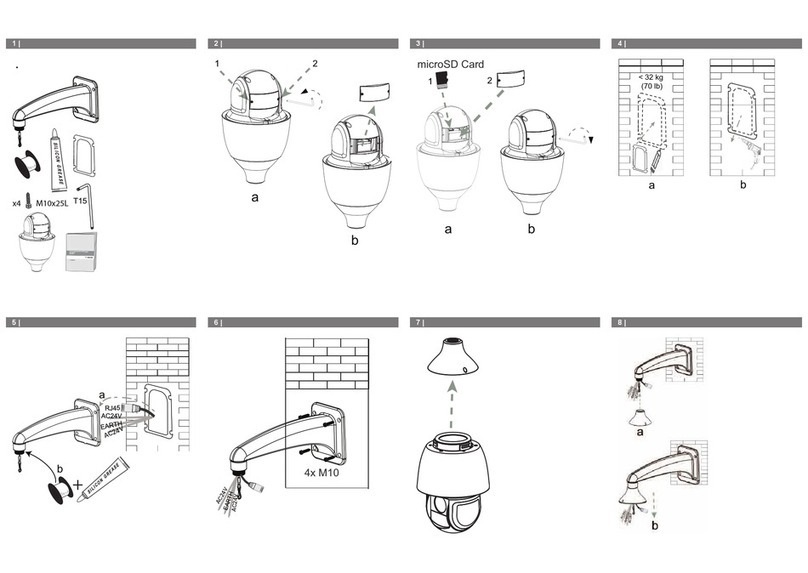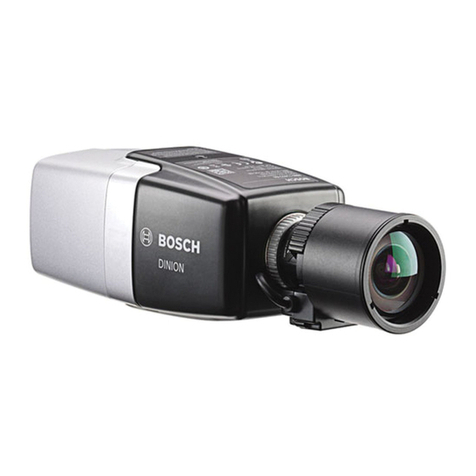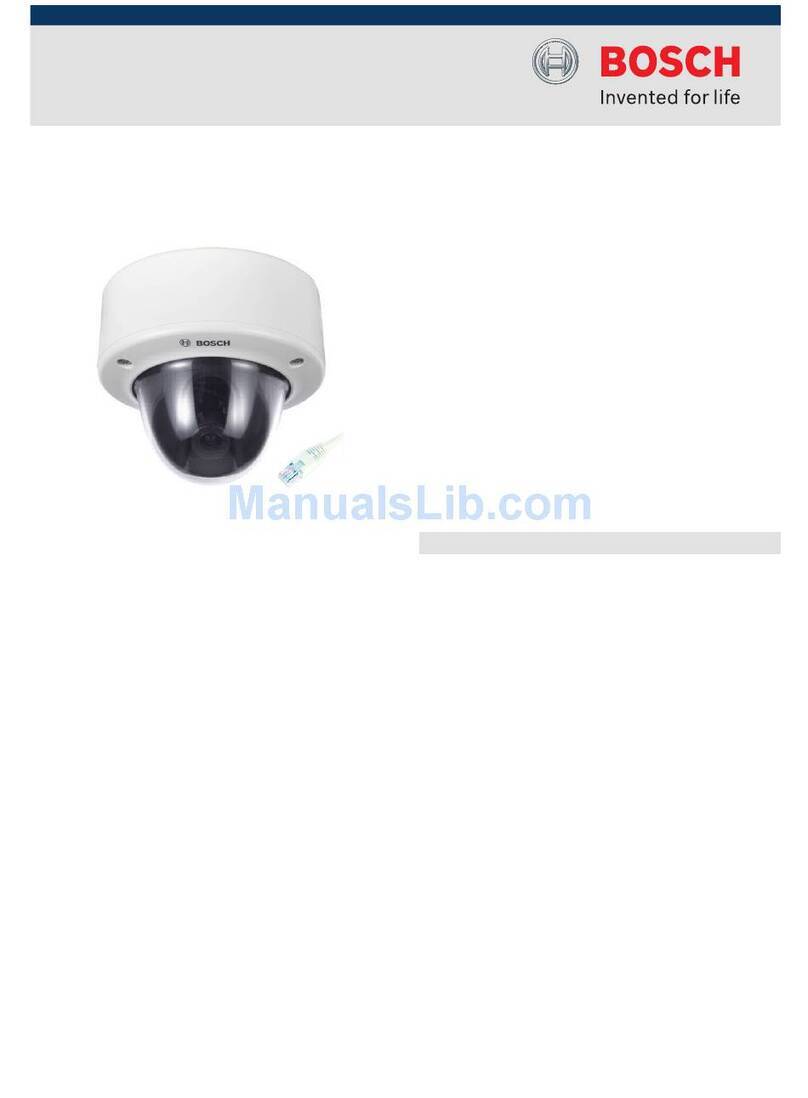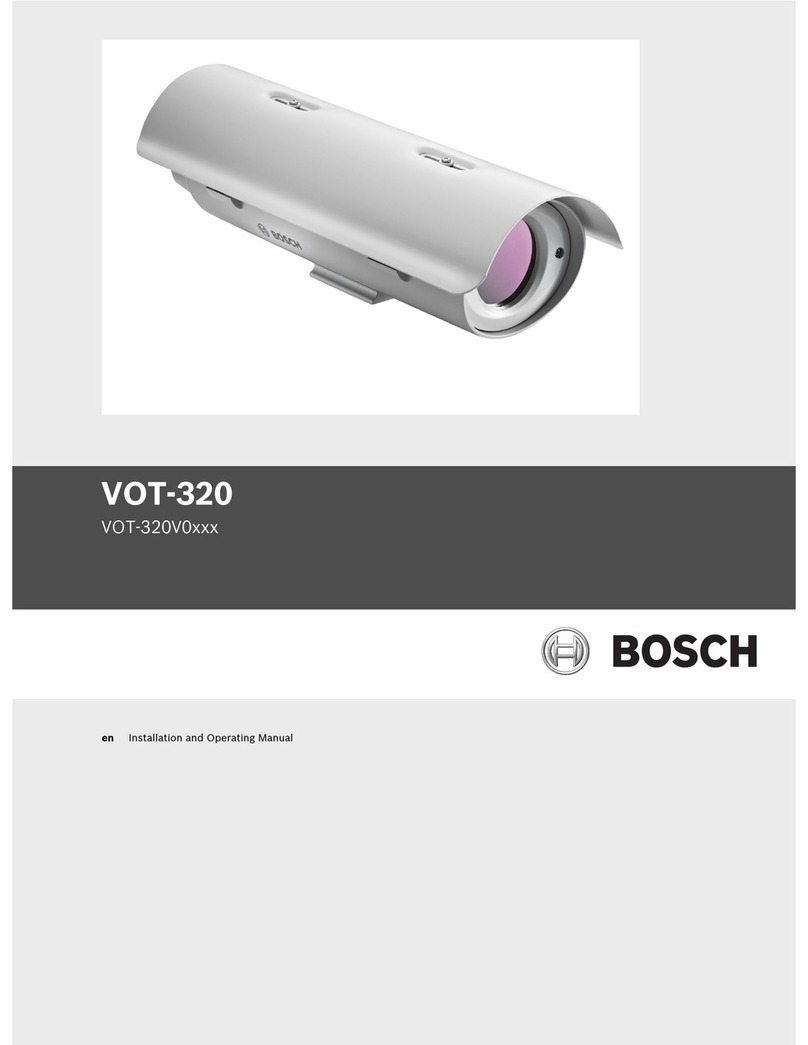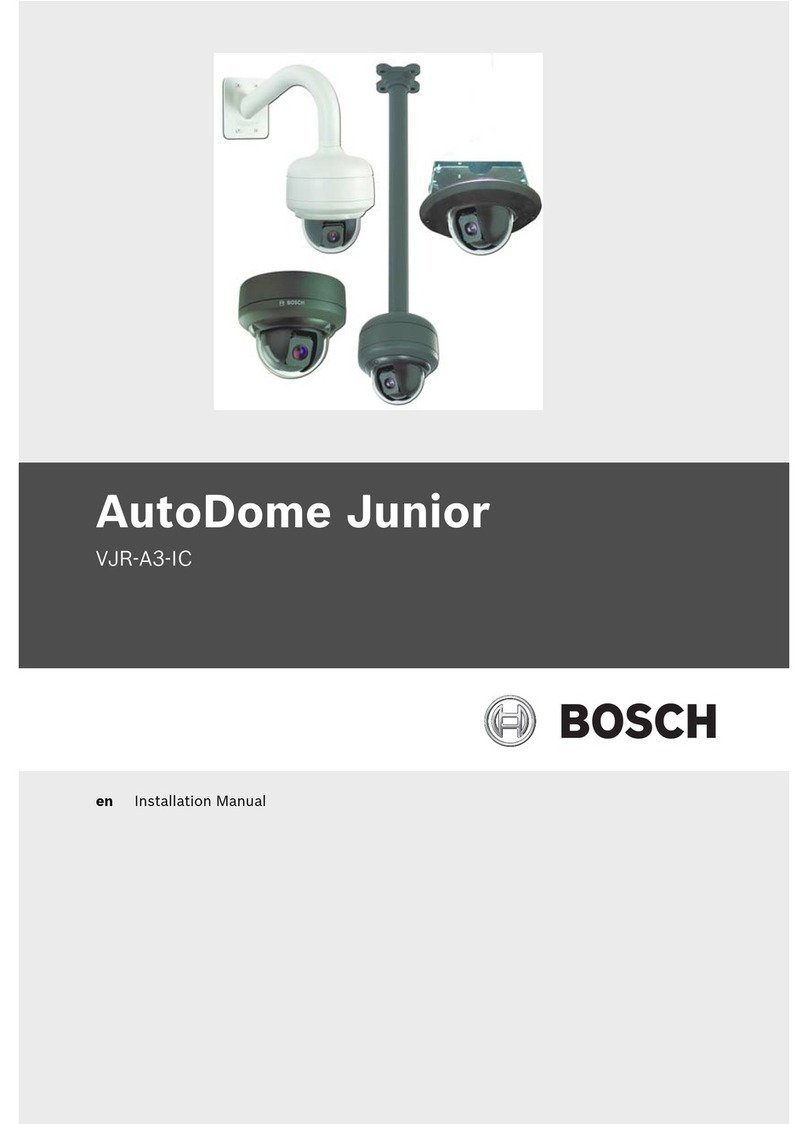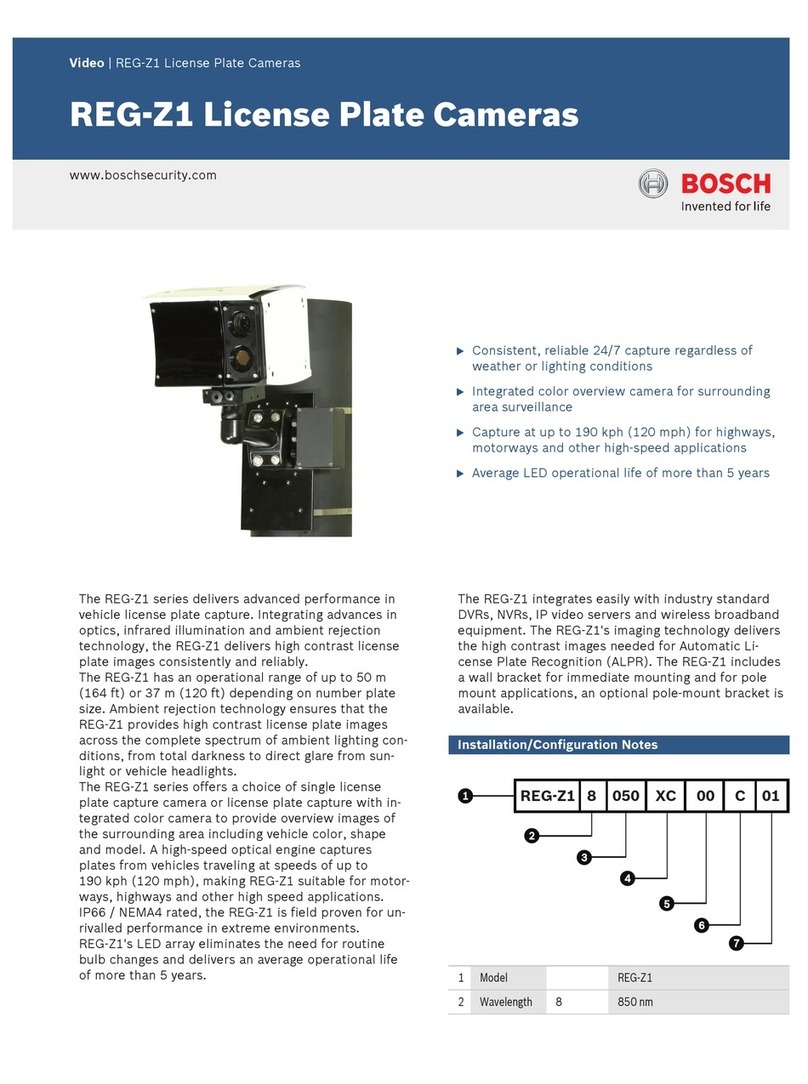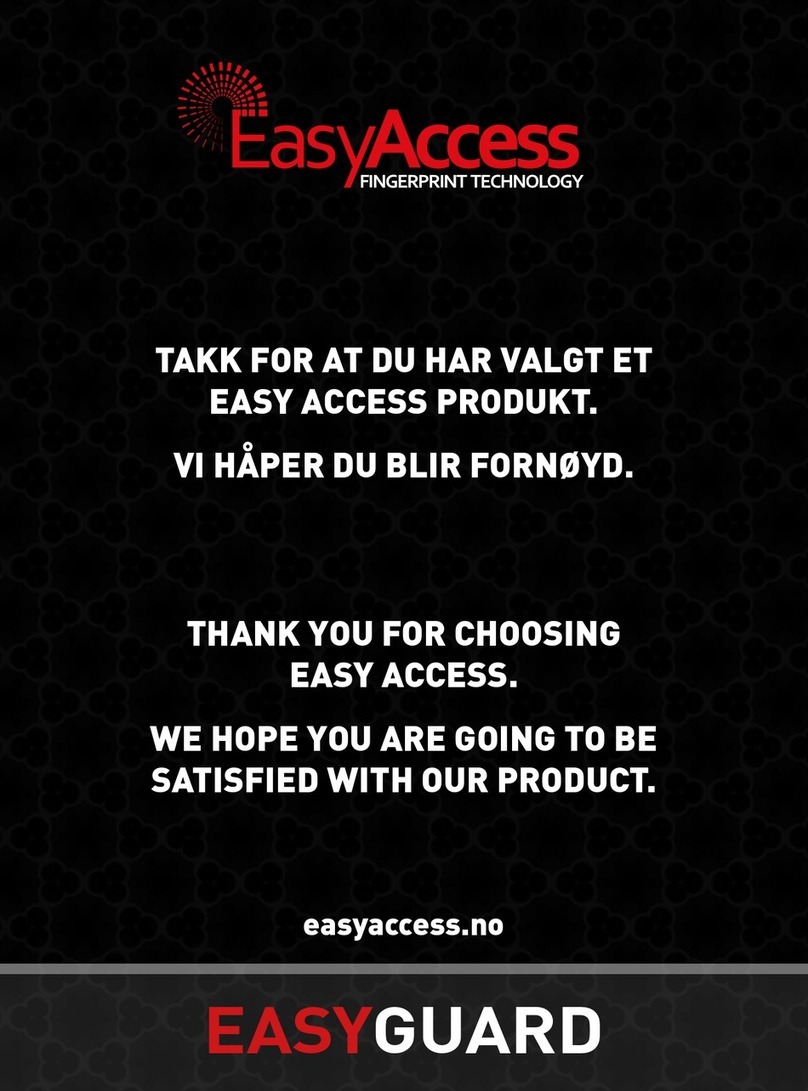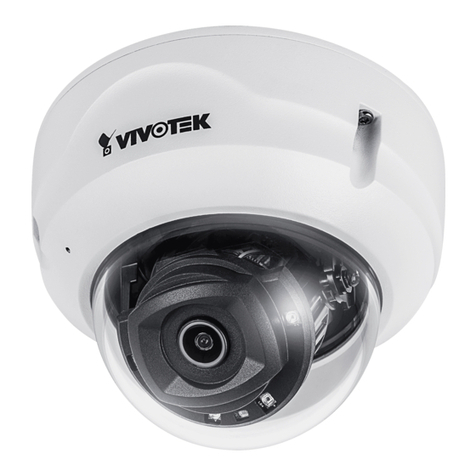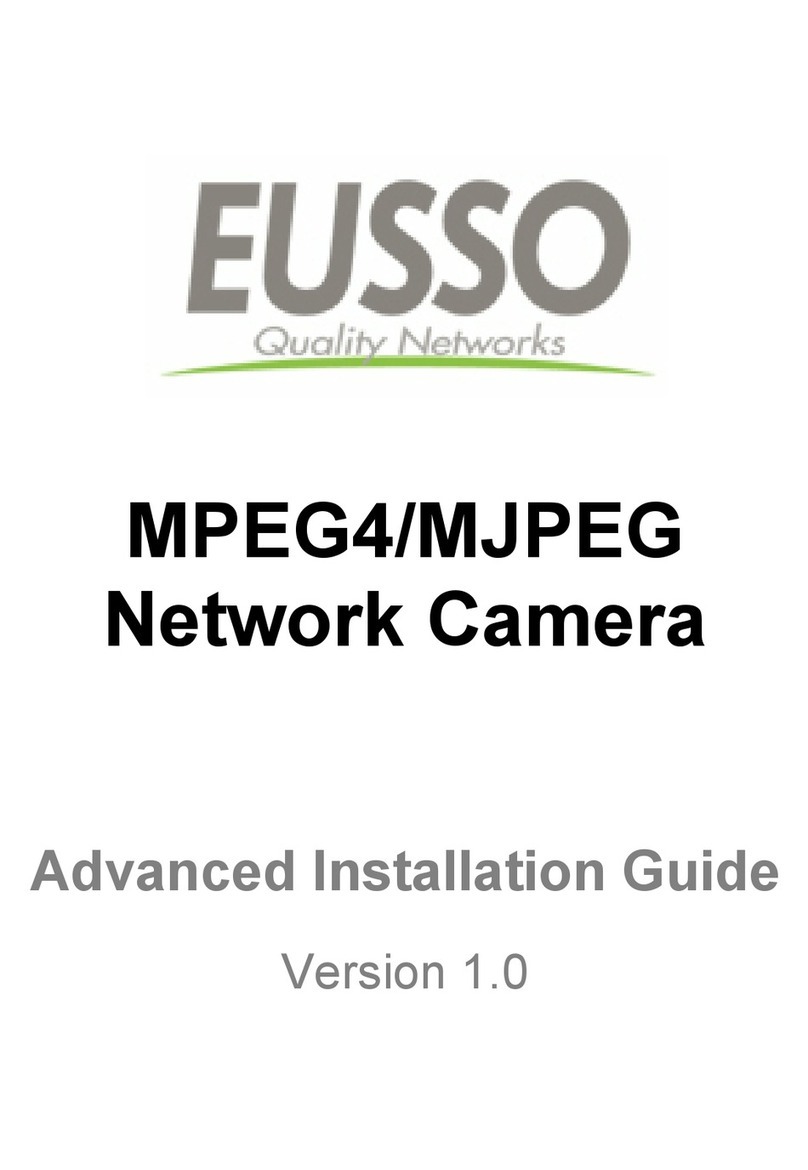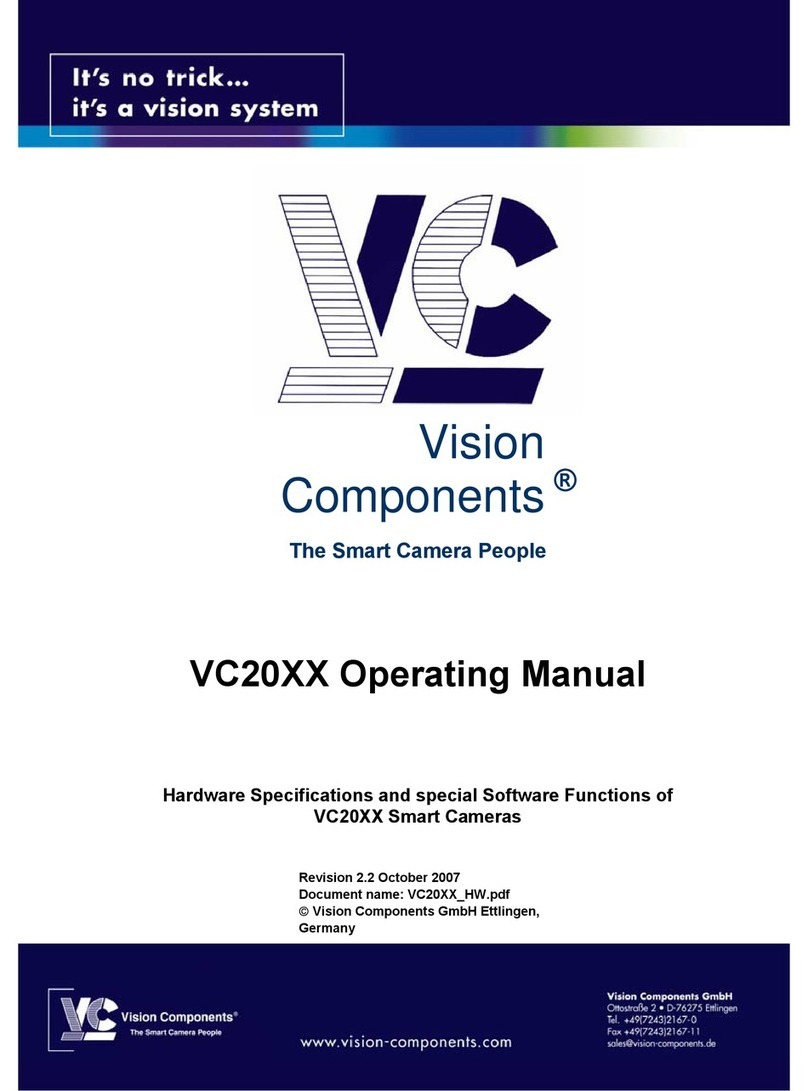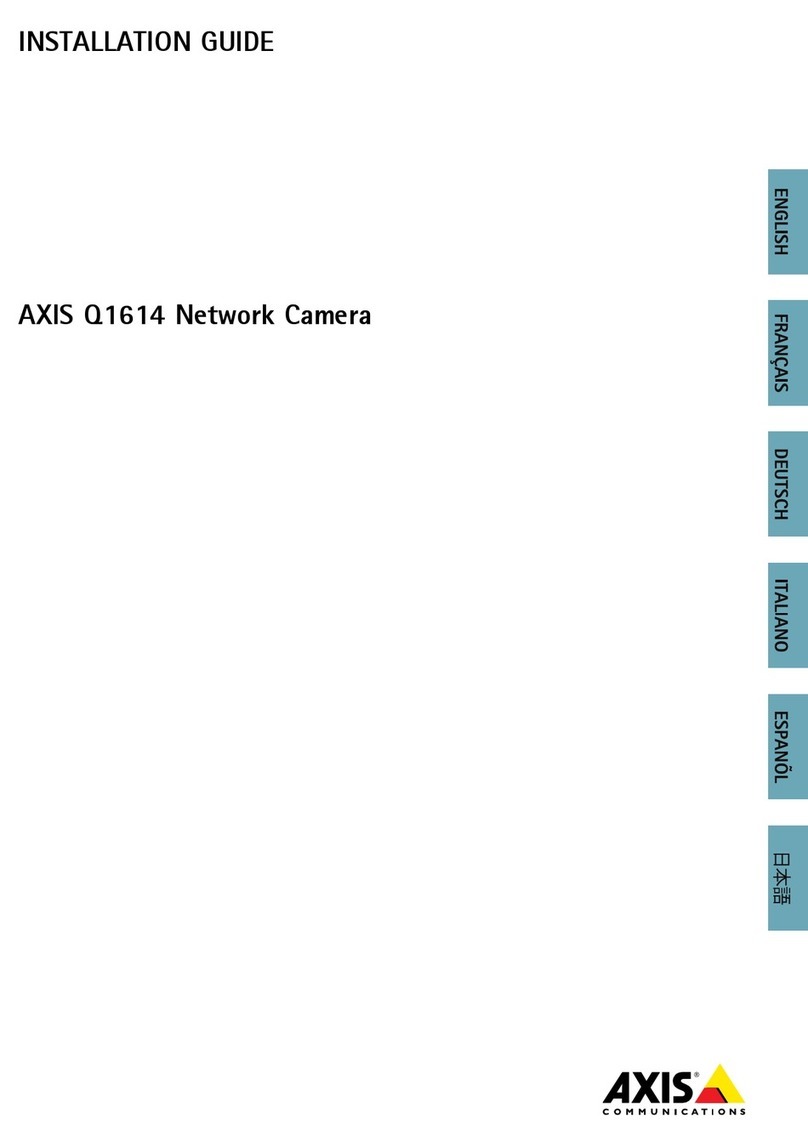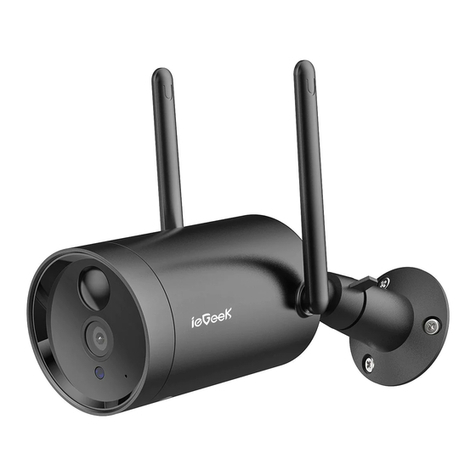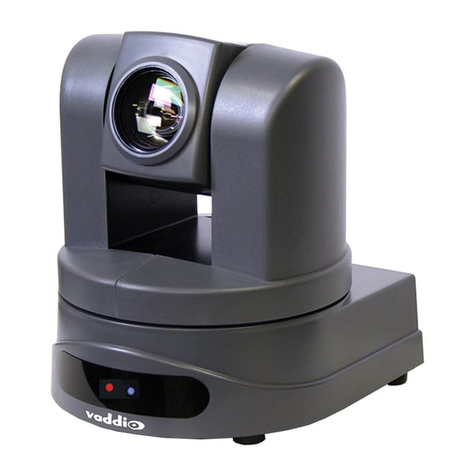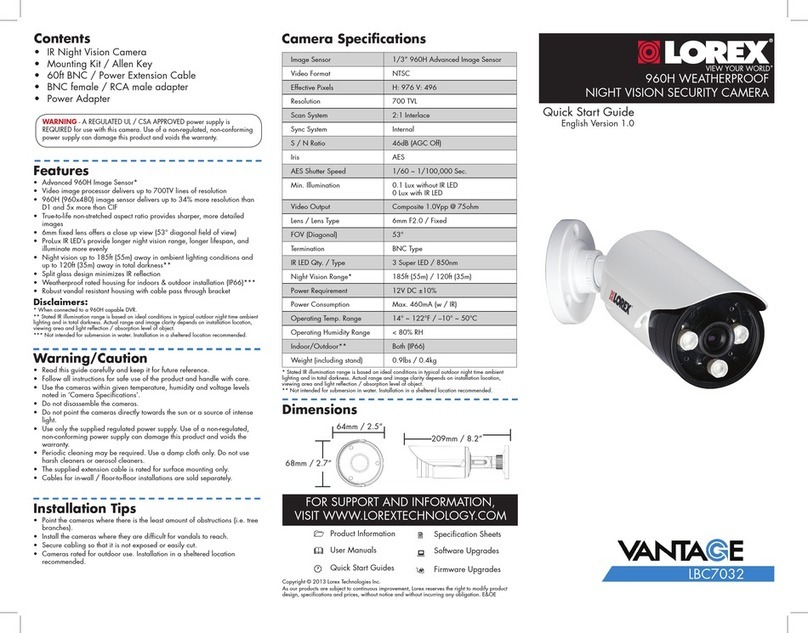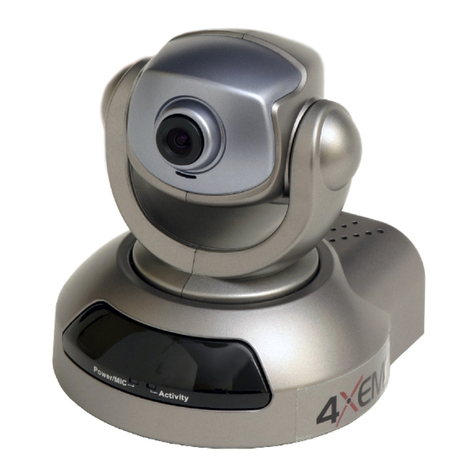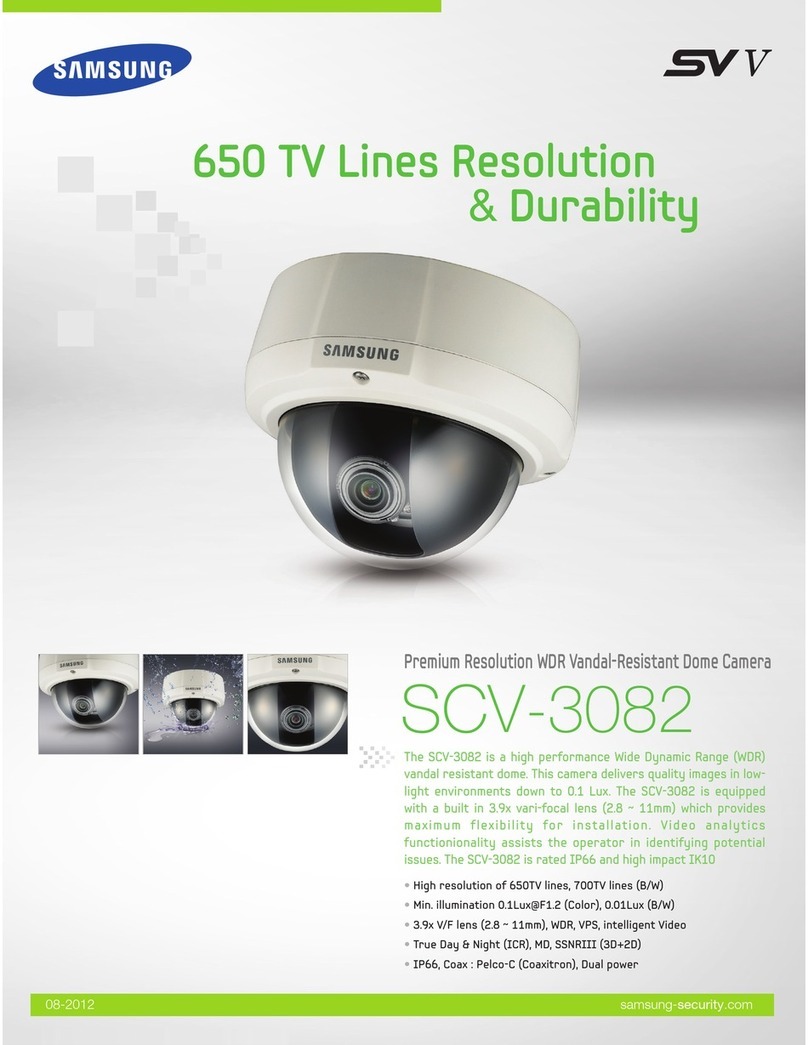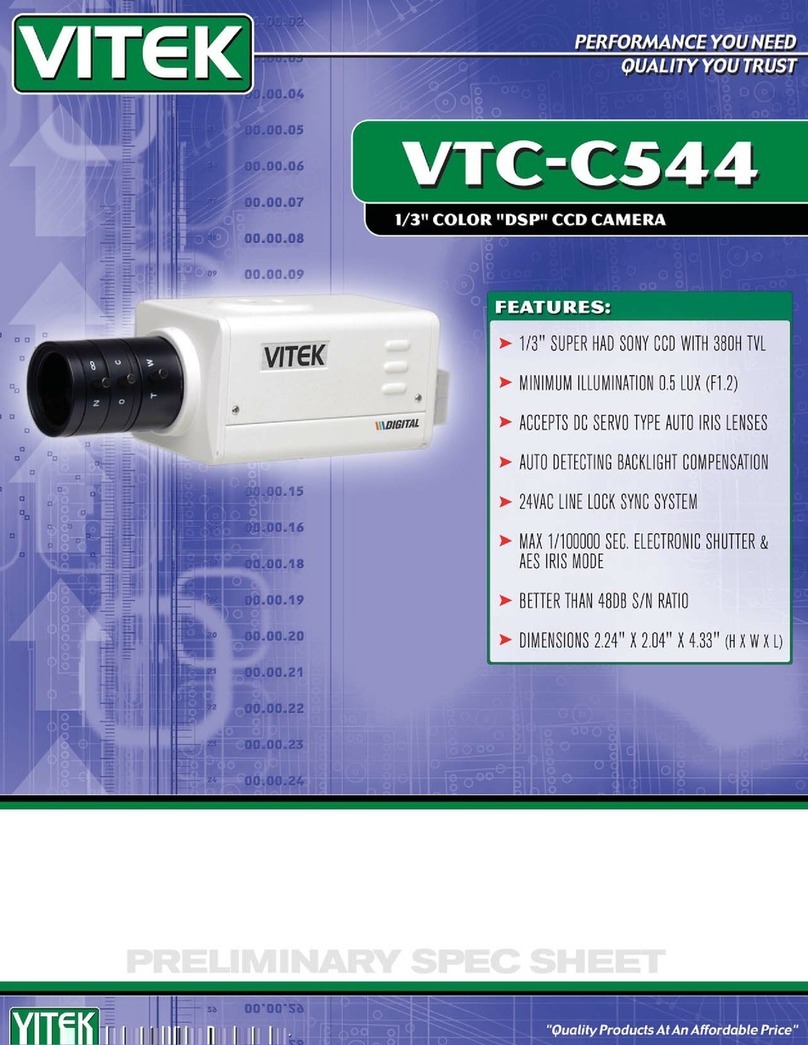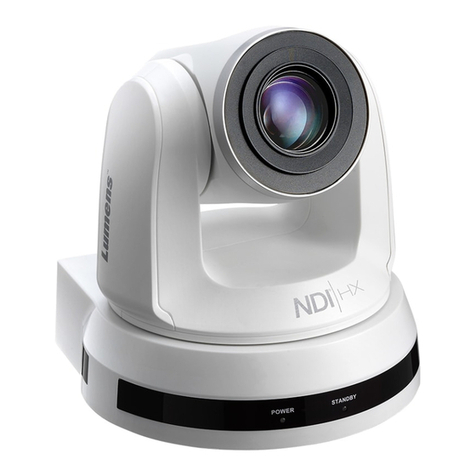6en | Safety AUTODOME IP 5000i IR
2017.08 | 1.0 | Installation Manual Bosch Security Systems
Always use Teflon tape and sealant on connector threads of any mount (sold separately by
Bosch or user-supplied).
Notice!
Bosch recommends the use of surge/lightning protection devices (sourced locally) to protect
network and power cables and the camera installation site. Refer to NFPA 780, Class 1 & 2,
UL96A, or the equivalent code appropriate for your country/region, and to local building
codes. Refer also to the installation instructions of each device (surge protector where the
cable enters the building, midspan, and camera).
1.5 Safety Addendum
Notice!
Risk of water ingress
Securely seal all fittings and connection points between the device and all mounts to ensure a
liquid-tight seal. Failure to do so could allow water to enter the housing and damage the
device. Always use Teflon tape and sealant on connector threads of any mount (sold
separately by Bosch or user-supplied).
If a sealant is used, ensure that it is a neutral cure type. Sealants that release acetic acid may
harm electronics.
Use drip loops on the wiring outside the housing.
1.6 Important Notices - Illumination Safety
Notice!
This product has been tested according to standard IEC62471:2006 “Photobiological safety
of lamps and lamp systems”. The product emissions meets the EXEMPT Group limit for
Cornea/Lens infrared hazard as defined by IEC 62471:2006. The product was found to meet
the EXEMPT Group exposure limits for IR LEDs.
The IEC 62471 provides the methods to determine the risk group of any lamp or any product
incorporating a lamp. The risk groups in IEC 62471 indicate the degree of risk from potential
optical radiation hazards. The risk groups were developed based upon decades of lamp use
experience and the analysis of accidental injuries related to optical radiation emission.
EXEMPT Group – no optical hazard is considered reasonably foreseeable, even for
continuous, unrestricted use. Typical examples are most frosted incandescent lamps and
fluorescent lamps used in domestic applications.
Exposure Hazard Value (EHV) is a ratio of the Exposure Level (distance, exposure time) to
Exposure Limit Value (ELV). When EHV is greater than 1, the device has exceeded the
Exposure Limit Values for a particular Risk Group. The ELV is the level where optical radiation
to the eye or skin is not expected to result in adverse biological effects.
The Hazard Distance (HD) is the distance from the source at which the Exposure Level equals
the appropriate ELV. In other words, when EHV=1 for a particular Risk Group.
Regarding the Cornea / Lens infrared hazard of this product, the Exposure Hazard Value (EHV)
at a test distance of 200mm is 2.19 based on EXEMPT Group exposure limits. The EHV based
on Risk Group 1 limits is 0.386. The HD for the Exempt Group is 297 mm.
These values have been summarized in the table below:
Hazard
EXEMPT Group Limits
t, duration d, distance EHV
